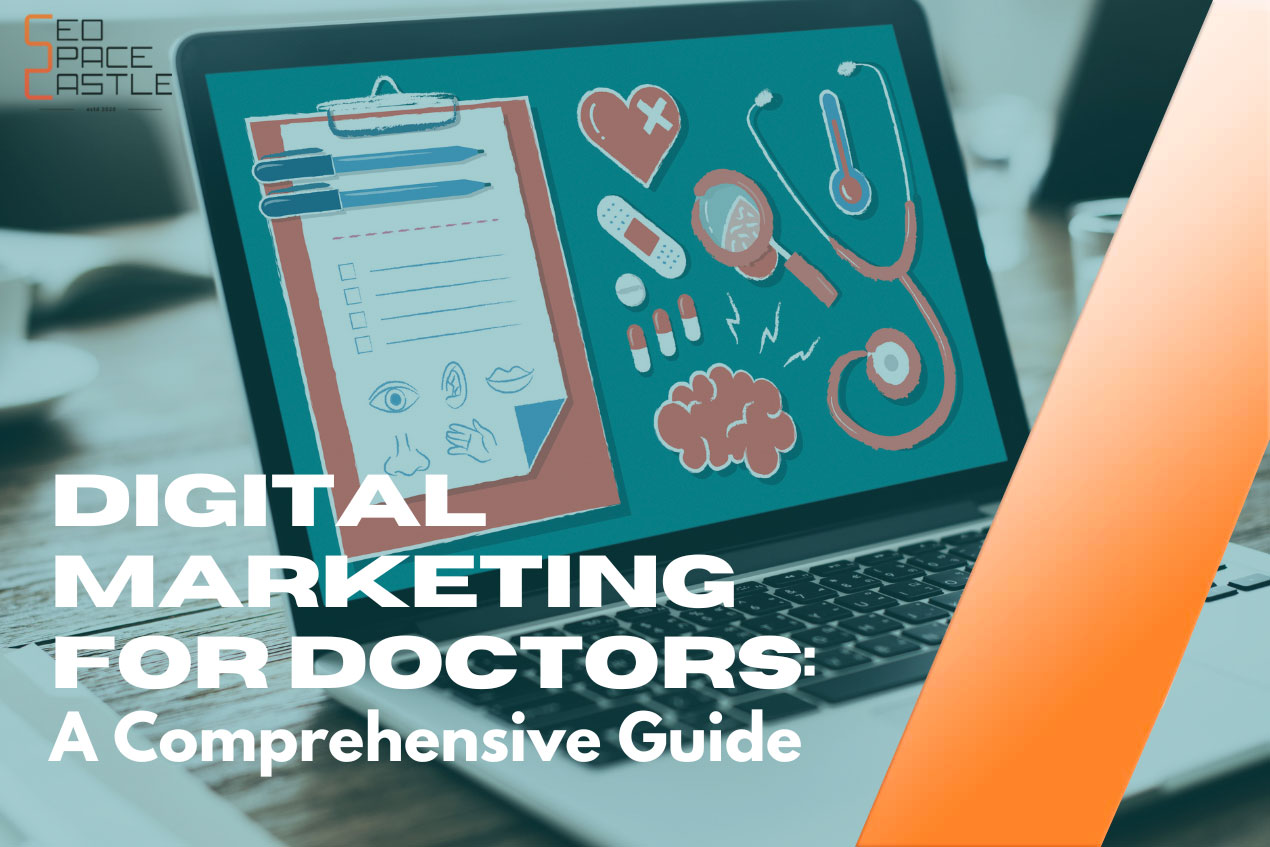In today's digital age, the demand for web design development services has never been higher. Companies and individuals alike are seeking ways to create websites that are not only visually appealing but also interactive and user-friendly. This growing need has spurred the evolution of web development services, where a primary focus is on enhancing user experience (UX). This blog will examine how interactive online design and user experience intersect, as well as discuss important security procedures for web developers. By the end, you’ll see why hiring a trusted Web Development Company like SEO Space Castle is essential for creating secure and engaging websites.
Table of Contents
- The Importance of Interactive Web Design
- Key Elements of Interactive Web Design
- Benefits of Interactive Web Design
- Functions of Web Development Services
- Front-End Development
- Back-End Development
- Full-Stack Development
- Finding a Suitable Web Development Agency
- Creating Secure Websites: Important Security Techniques for Web Developers
- Safe Coding Techniques
- Frequent evaluations of security
- Installing Software
- Using Safe Web Hosting Services
- Integrating Security with the user experience
- Conclusion
The Importance of Interactive Web Design
Interactive web design is all about creating a dynamic and engaging user experience. Unlike static websites that simply present information, interactive websites encourage users to engage, explore, and interact with the content. This approach not only captivates visitors but also increases the likelihood of them returning to your site.
Key Elements of Interactive Web Design
I.) User-Friendly Navigation: The foundation of a positive user experience is simple, intuitive navigation. Making sure consumers can quickly locate what they're seeking can lengthen their stay on your website and drastically lower bounce rates.
II.) Responsive design: Is crucial since mobile devices account for the great bulk of website traffic. It guarantees that your website works and looks great across all platforms, including computers and smartphones.
III.) Interactive Elements: You may increase the engagement of a website by adding elements like forms, sliders, buttons, and interactive maps. Instead than just passively consuming the material, these features let people engage with it.
IV.) Animations and Transitions: Subtle animations and smooth transitions can enhance the visual appeal of your website. They can also provide visual feedback, helping users understand how to navigate your site.
V.) Personalization: Tailoring the user experience based on individual user behavior and preferences can make your website more relevant and engaging. Personalization can range from displaying user-specific content to offering personalized recommendations.
Benefits of Interactive Web Design
I.) Enhanced User Engagement: Longer user engagement on interactive websites can result in better conversion rates and client retention.
II.) Increased customer contentment: Customer loyalty and contentment may be greatly increased by a website that adapts to the requirements and preferences of its users.
III.) Improved Brand Image: Your brand seems more inventive and customer-focused when it has a contemporary, dynamic website.
Functions of Web Development Services

Web development services are required to make interactive web designs possible. Behind the scenes, web developers ensure that a website's interactive features work properly. Listed below are some vital components of web development that enhance User Experience (UX):
Front-End Development
Coding for the visible components of a website that visitors can directly interact with is referred to as front-end development. This covers JavaScript, CSS, and HTML. A professional front-end developer guarantees that the visual design is effectively executed and tailored for user interaction and performance.
I.) HTML: The basis of internet content, HTML manages a webpage's content.
II.) CSS: CSS provides style for HTML information, improving its adaptability and visual appeal.
III.) JavaScript: JavaScript provides a website with greater functionality by offering dynamic features and content such as form validation, animations, and user interactions.
Back-End Development
The development of the back-end handles the server, database, and software logic, and front-end development works on the user experience (UX). Processing activities, storing user data, and maintaining the smooth functioning of the interactive front-end features all rely on an effective back-end.
I.) Server Management: Ensuring the server runs smoothly and efficiently, handling requests, and delivering content to users.
II.) Database Management: It is reliable and efficient storage, extraction, and maintenance of databases.
III.) Application logic: Bringing to use the website's fundamental characteristics, such as data analysis, authentication of users, and business logic.
Full-Stack Development
Front-end and back-end software development are the fields of competency for full-stack developers. They can handle each stage of the web development procedure, from server-side logic execution to designing the user interface (UI). The capacity of these individuals to develop well-integrated and structured websites comes from their wide skill set.
Finding a Suitable Web Development Agency
Collaborating with a reputable web development business is essential, knowing the complex nature and importance of creating secure and user-friendly websites. Some factors to remember when hiring a web development company are listed below:
I.) Skills and Experience: Find a web development agency with a proven track record of results. Verify their abilities by looking over their portfolio and feedback from clients.
II.) Comprehensive Services: Pick an agency that provides all aspects of web development, from development and design to ongoing service and support. By providing a single team to maintain every aspect of your website, you may enhance coordination and consistency.
III.) Security Techniques: A key aspect of web development is privacy. Verify that the organization respects industry norms for website security, such as encrypted data, safe coding methods, and routine security audits.
IV.) Coordination and Communication: The achievement of each web development project relies on effective communication and cooperation. Find an organization that values your points of view and keeps you aware of its development.
Creating Secure Websites: Important Security Techniques for Web Developers
While creating an interactive and engaging website is important, ensuring its security is equally crucial. Web developers need to be on alert for new cybersecurity risks all of the time to prevent their websites from being damaged. These are some crucial safety precautions that web developers need to understand:
Safe Coding Techniques
I.) Validate every user input to stop typical threats like cross-site scripting and SQL injection (XSS). Make use of input sanitization tools and parameterized queries.
II.) Authentication and Permission: To verify user identities, use reliable verification methods such as multi-factor authentication (MFA). Make sure that users hold appropriate certificates of privilege and restrict their capacity to access confidential data.
III.) Encryptionizing Data: Encrypt important data whenever it's in motion and at rest. For security of data transmitted between the user's browser and the server, use HTTPS.
IV.) Error Solutions: Handle issues properly to prevent exposing confidential data. Users need to see overall error messages, and developers must be able to see the full issue information captured.
Frequent evaluations of security
Conduct frequent safety checks to discover and address flaws in your website. This involves code reviews, penetration testing, and vulnerability scanning. Monthly audits contribute to making sure your website remains safe from fresh threats.
Installing Software
Make sure that each component of software, including the libraries, plugins, and content management system (CMS), is maintained. Security adjustments for vulnerabilities that are renowned are often found in upgrades to the software.
Using Safe Web Hosting Services
Find a web hosting provider that considers security paramount. Look for features that include firewalls, DDoS protection, and frequent backups. The probability of cyberattacks could be largely decreased by using a secure hosting environment.
Integrating Security with the user experience
A key aspect of web development involves finding a balance between security and user experience (UX). Make it convenient that users shouldn't need to be compromised for security applications. The following methods can help you effectively incorporate security into the website's design:
I.) User-Friendly Protection: Make sure that strong methods of authentication, like MFA, are convenient to use when setting them into place. MFA, for example, applies push notifications instead of complex token-based techniques.
II.) Transparent Security Measures: Inform users about the security measures in place without overwhelming them with technical details. For instance, display trust badges and SSL certificates to reassure users.
III.) Responsive Security Practices: Ensure that security measures are responsive and do not hinder the performance of the website. Optimize security checks to minimize any impact on load times and user interactions.
IV.) User education: It must involve educating users on when to spot scams as well as how to create encrypted passwords, along with other essential safety standards. Give them recommendations and instructions so they can use your website securely.
Conclusion
Leveraging interactive web design for a better user experience is important for developing successful and intriguing websites. It can be done to create websites that are not only visually appealing but also secure and helpful through using the experience of web design development services and concentrating on both front-end and back-end development. By consulting with a trustworthy web development agency like SEO Space Castle, you will feel convinced that your website is safe against increasing cybersecurity threats and has been created to the most significant standards.
For comprehensive web development services that prioritize both user experience and security, consider partnering with SEO Space Castle. Together, we can build secure and interactive websites that stand out in today's competitive online environment.





























